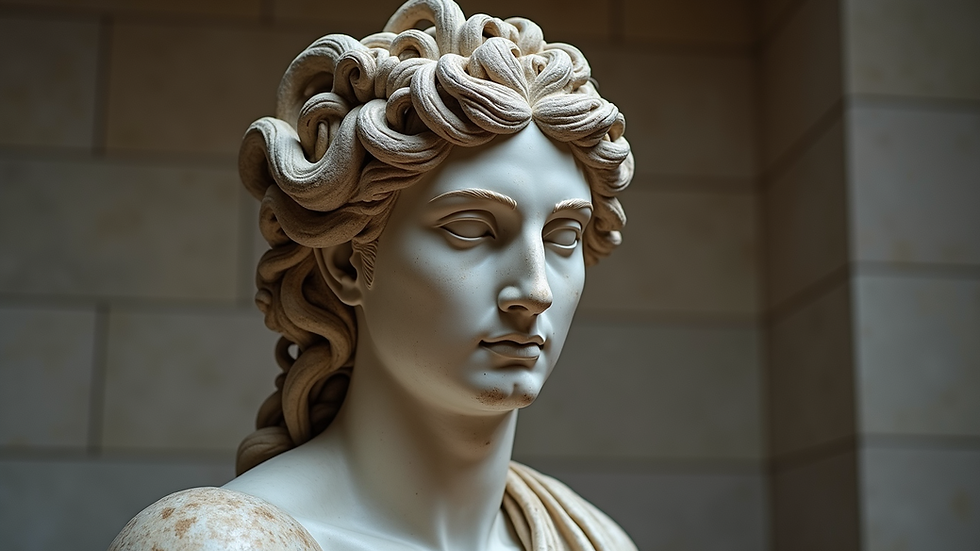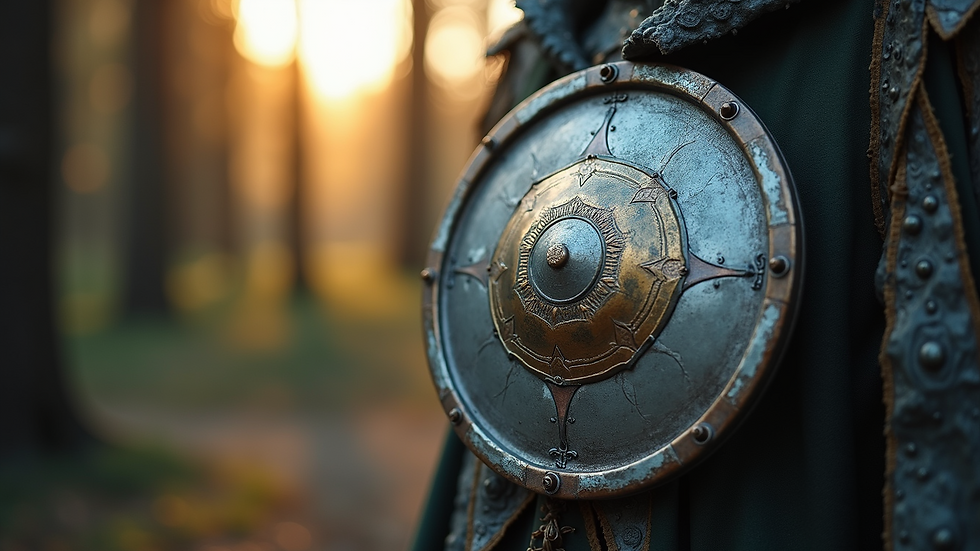Medusa and Perseus: A Legendary Tale
- Sarah Jordyn

- Sep 29
- 4 min read
Let me take you on a thrilling journey into one of the most captivating myths ever told - the story of Medusa and Perseus! This tale is packed with adventure, danger, and a touch of magic that has inspired countless tabletop RPG campaigns and storytelling sessions. Whether you're a game master looking for fresh inspiration or a player eager to dive into mythic quests, this story has something for you. So, buckle up and get ready to explore the world of gods, monsters, and heroes!
The Mythical World of Medusa and Perseus
When you think of Greek mythology, Medusa and Perseus probably pop into your mind right away. Medusa, the infamous Gorgon with snakes for hair, and Perseus, the brave hero who dared to face her, are iconic figures. But what makes their story so special? It’s the blend of danger, cunning, and divine intervention that makes it endlessly fascinating.
Medusa wasn’t always a monster. She was once a beautiful maiden, cursed by the goddess Athena. Her hair turned into venomous snakes, and anyone who looked directly at her would turn to stone. Talk about a deadly gaze! Perseus, on the other hand, was a demigod, son of Zeus, destined for greatness. His quest to slay Medusa is a classic hero’s journey filled with magical gifts, clever tactics, and nail-biting moments.

If you’re crafting a campaign or story, this myth offers rich material. Imagine the tension as your players navigate a labyrinth to find Medusa’s lair or the thrill of wielding a mirrored shield to avoid her petrifying stare. The possibilities are endless!
How Medusa and Perseus Shape RPG Storytelling
The dynamic between Medusa and Perseus is a goldmine for tabletop RPG creators. It’s not just about the monster and the hero; it’s about transformation, fate, and the power of cleverness over brute strength. When you incorporate this myth into your game, you’re inviting players to explore themes of courage, consequence, and redemption.
Here’s why this story works so well in RPGs:
Clear Objectives: The quest to defeat Medusa is straightforward but challenging.
Magical Artifacts: Items like the reflective shield, winged sandals, and the harpe sword add exciting mechanics.
Moral Complexity: Medusa’s tragic backstory invites players to question who the real villain is.
Epic Encounters: Facing a Gorgon is a memorable climax for any adventure.
Using the medusa and perseus story as a foundation, you can build quests that test your players’ wit and bravery. Plus, the myth’s rich symbolism can inspire character development and plot twists that keep everyone on their toes.

What is the Full Story of Perseus and Medusa?
Alright, let’s dive into the full story because it’s a wild ride! Perseus was the son of Danaë and Zeus, born under extraordinary circumstances. His grandfather, King Acrisius, feared a prophecy that Perseus would one day kill him, so he locked Danaë and her son away. But fate had other plans.
Perseus grew up and was sent on a seemingly impossible mission: to bring back the head of Medusa. Why? Because King Polydectes wanted to get rid of Perseus and marry Danaë. Armed with gifts from the gods - Hermes’ winged sandals, Hades’ helm of invisibility, Athena’s polished shield, and a magical sword - Perseus set out.
He found the Gorgons’ lair, used the shield as a mirror to avoid Medusa’s deadly gaze, and beheaded her while she slept. From her blood sprang Pegasus, the winged horse, and Chrysaor, a giant. Perseus then escaped using the helm of invisibility, later using Medusa’s head as a weapon to turn enemies to stone.
This story is packed with action, divine intervention, and unforgettable moments that make it perfect for RPG storytelling. Imagine your players navigating the dangers of the Gorgon’s lair or deciding what to do with a powerful artifact like Medusa’s head!

Bringing the Myth to Life in Your Campaigns
So, how can you bring this legendary tale into your tabletop RPG sessions? Here are some practical tips to get you started:
Create a Quest Hook: Maybe the players need Medusa’s head to break a curse or save a kingdom.
Design Unique Challenges: Use puzzles, traps, and illusions in the Gorgon’s lair to keep players engaged.
Introduce Magical Items: Let players find or earn items like the reflective shield or invisibility helm.
Explore Moral Dilemmas: Should Medusa be slain, or is there a way to lift her curse? Let players decide.
Use Dynamic NPCs: Characters like Athena, Hermes, or even Medusa herself can add depth and intrigue.
By weaving these elements into your game, you create a rich, immersive experience that honors the myth while giving your players agency and excitement. Plus, it’s a fantastic way to introduce mythological themes to your group in a fresh, interactive way.
Why This Myth Still Resonates Today
You might wonder why the story of Medusa and Perseus continues to captivate us. It’s because it taps into universal themes - fear, power, transformation, and heroism. Medusa’s tragic curse reminds us that appearances can be deceiving, and Perseus’ bravery shows the power of cleverness and courage.
For tabletop RPG players and creators, this myth offers endless inspiration. It encourages us to think about the stories we tell and how they reflect our own struggles and triumphs. Plus, it’s just plain fun! Who doesn’t love a good monster hunt with magical gear and high stakes?
So next time you’re planning a campaign or looking for a legendary tale to spark your imagination, remember the epic saga of Medusa and Perseus. It’s a story that’s as thrilling today as it was thousands of years ago.
Ready to dive deeper? Check out the full medusa and perseus story and start crafting your own mythic adventures today!








Comments